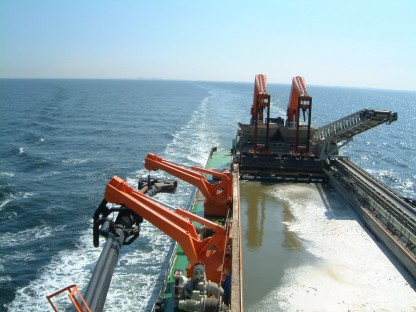Sand extraction and Natura 2000
27 - 35m cubic metres of sand per year are extracted from the seabed outside the coastal base (deeper than 20 metres below the Amsterdam Ordnance Datum). The North Sea sand is used for coastal maintenance and as filler sand and masonry sand. It is expected that demand for sea sand will gradually increase as sea levels continue to rise.

A sand dredger not only extracts sand from the seabed; it also extracts all the organisms that live in it, at the expense of the marine food chain. Furthermore, sand dredger operations cause turbidity in sea water. These effects are associated with risks for the North Sea Coastal Zone, Voordelta and Raan Flats Natura 2000 areas. An example of such a risk is the adverse effect on food availability for birds such as the common scoter. The process of drafting management plans involved carrying out in-depth analysis of the effects of this risk. The report on this study, 'Zandwinning in de Noordzee 2018-2027' (Sand extraction in the North Sea 2018-2027), concludes that there are no indications of significant adverse effects from sand extraction in these areas. But that is not necessarily the last word on the subject. In 2022, the Netherlands Organisation for Scientific Research (NWO) began a detailed study into the long-term effects of large-scale off-shore sand extraction.